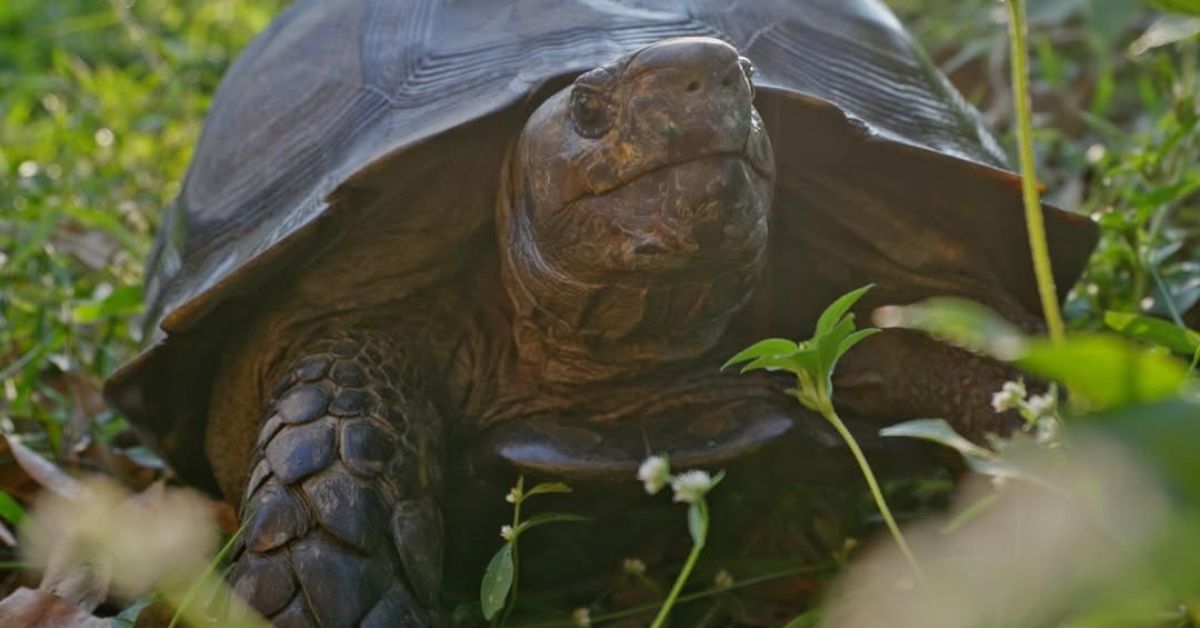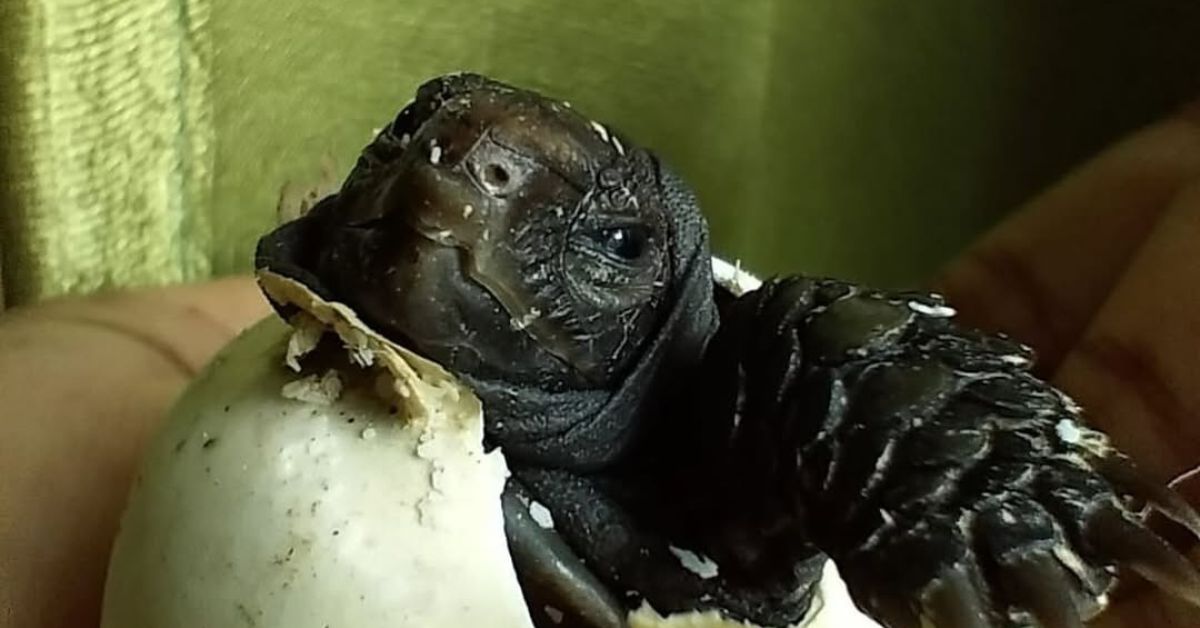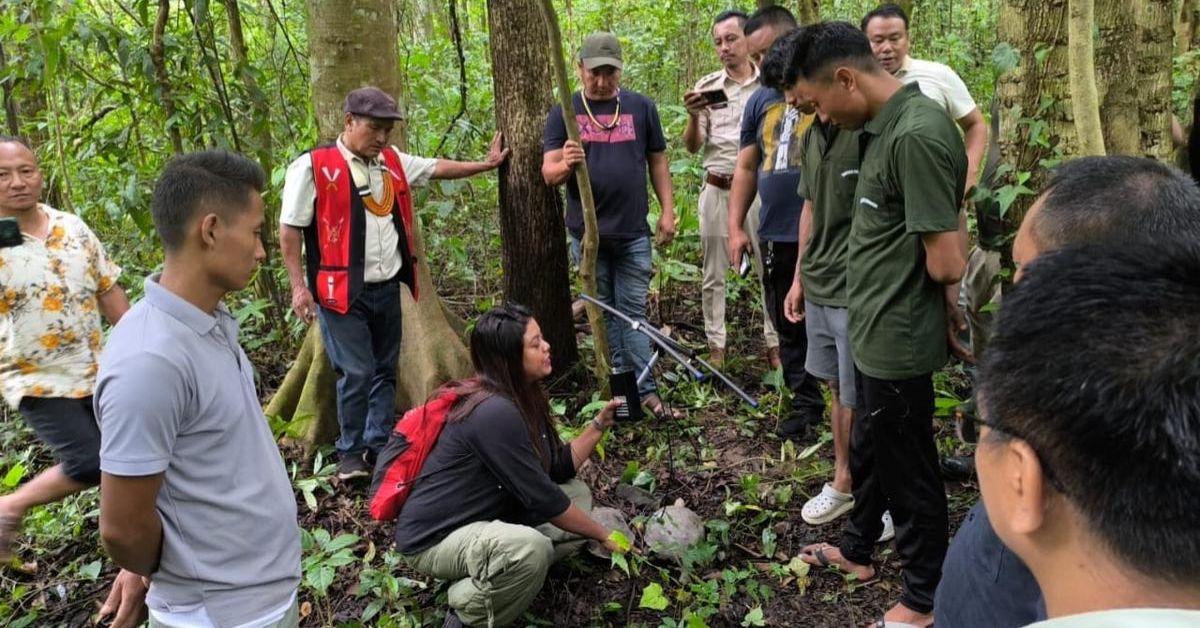Asian Giant Tortoise Returns to Wild in Nagaland: A Rewilding Led by Tribal Youth
Feature image courtesy: The Hindu
A remarkable conservation story has unfolded in the forests of Nagaland’s Peren district, with tribal youth at its heart. Local young volunteers have stepped forward to help reintroduce the critically endangered Asian Giant Tortoise into a community-protected forest. Their work is not just saving a species; it’s redefining sustainability through community stewardship.
A tortoise with a humble but vital role
The Asian Giant Tortoise (Manouria emys) is mainland Asia’s largest tortoise species. Adults can weigh up to 36 kg and live for several decades. Historically found in the evergreen forests of Northeast India, Myanmar, and Bangladesh, these slow-moving creatures play a vital ecological role.
 The Asian Giant Tortoise (Manouria emys) is mainland Asia’s largest tortoise species. Image courtesy: Instagram
The Asian Giant Tortoise (Manouria emys) is mainland Asia’s largest tortoise species. Image courtesy: Instagram
As seed dispersers, they help regenerate forests. Despite this, their populations have plummeted due to hunting and habitat loss. Today, fewer than a few hundred remain in the wild, earning them a critically endangered status on the IUCN Red List.
This pioneering effort is India’s first monitored rewilding of this kind for the species. In December 2022, ten tortoises, bred in captivity at Nagaland Zoological Park in Dimapur, were carefully released into the Intanki National Park, a community-managed forest in Peren.
The programme is a collaboration between the Nagaland Forest Department, the Turtle Survival Alliance, and Wildlife Conservation Society India.
The zoo had, over five years, built a healthy breeding stock of more than 110 hatchlings from 13 adult founders.
 The young volunteers monitor the released tortoises, record movement data using VHF telemetry. Image courtesy: Instagram
The young volunteers monitor the released tortoises, record movement data using VHF telemetry. Image courtesy: Instagram
To assist in their transition, the tortoises were placed in a fenced natural enclosure through winter, allowing them to acclimatise. As the monsoon arrived, the fence was opened. This “soft release” approach ensured the animals would gradually adapt to the wild while remaining in familiar territory.
Youth guardians of the forest
What makes this initiative particularly inspiring is the involvement of local tribal youth as “Tortoise Guardians”. These young volunteers monitor the released tortoises, record movement data using VHF telemetry, and work to raise awareness in their villages against hunting and habitat disturbance.
After five months within the enclosure, the tortoises were tracked and found to explore areas within a 500-metre radius, suggesting they were adapting well.
Field teams conducted regular surveys to map tortoise trails, feeding sites, and resting spots. Their data will inform future releases and habitat management strategies.
Why this matters for sustainability
Community-led conservation
When locals take charge, conservation becomes personal, durable and culturally meaningful.
Ecological restoration
Tortoises help disperse seeds, maintaining plant diversity and soil health in the forest.
Scientific insights
Field tracking provides vital data on tortoise behaviour, habitat use and survival post-release.
 Tortoises help disperse seeds, maintaining plant diversity and soil health in the forest. Image courtesy: Instagram
Tortoises help disperse seeds, maintaining plant diversity and soil health in the forest. Image courtesy: Instagram
Local empowerment
Trained youth build conservation skills and leadership, with potential to expand similar programmes across the region.
Beyond the tortoise: healing the forest
This rewilding is part of a broader vision to restore ecological balance in Nagaland’s forests. By engaging tribal communities and giving youth meaningful conservation roles, the project bridges traditional knowledge with modern science.
Village leaders, once part of habitat degradation systems, are now pledging to protect released tortoises and preserve forests as Indigenous Community Conserved Areas (ICCAs).
The pilot model is expected to scale up across other suitable forests in Northeast India. Each phase of the project brings deeper involvement from local stakeholders and contributes to long-term habitat healing.
A new generation of eco-guardians
This story is a rare example of sustainability rooted in place, culture, and shared responsibility. While the tortoises re-enter landscapes they had vanished from, the local young volunteers are becoming the real legacy.
Their dedication could shape future eco-tourism, forest protection, and even seed funding for local livelihoods tied to conservation.
 Field teams conducted regular surveys to map tortoise trails, feeding sites, and resting spots. Image courtesy: The Hindu
Field teams conducted regular surveys to map tortoise trails, feeding sites, and resting spots. Image courtesy: The Hindu
If the initial phase proves successful, more tortoises will be released, along with more guardians to watch over them.
Ultimately, the aim is to return viable tortoise populations to forest patches where they once roamed and in doing so, bring back part of the forest’s natural rhythm.
In a world where conservation often feels distant, the forests of Nagaland show a different path: one walked by local youth, grounded in knowledge, courage, and care.
The Asian Giant Tortoise’s slow return to the wild may still be in its early stages, but with every tracked turtle and every young guardian trained, the shape of a new ecosystem begins to form.
News